Fuels
Driving hydrogen forward
21 January 2025
04 December 2018
Latest insights into the trends in global diesel fuel quality

The 2018 Infineum Winter Diesel Fuel Quality Survey provides an analysis of diesel fuels collected from around the world. Insight reveals the key trends and, as the global movement of fuel increases to meet changing demand patterns, highlights the wide variations in fuel quality that still exist.
The 2018 Infineum Winter Diesel Fuel Quality Survey (WDFQS) provides a snapshot of the quality of diesel fuel collected from retail service stations around the world and maps the trends in the results compared to previous years. In the northern hemisphere, samples were collected during the deep winter months, while in the southern hemisphere, sampling was undertaken in mid-2017, when true winter-grade samples were available.
53 countries were sampled, with a higher number of samples than in previous Surveys taken in China. The most interesting trends this year include the varied regional picture in the use of renewable fuels, the continuing trend for sulphur levels to fall and changes in lubricity performance – click here to access the full data set and to read our analysis of the results.
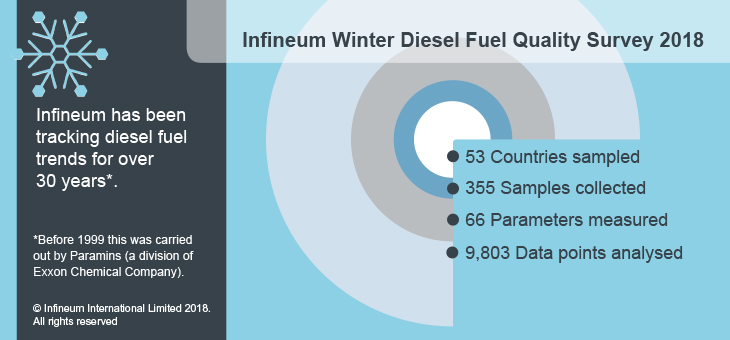
On a global level in the 2018 WDFQS, a higher percentage of samples contained fatty acid methyl ester (FAME) than in 2016. In addition, where FAME is used, there is an increase in the number of samples with FAME levels between B1 – B4.
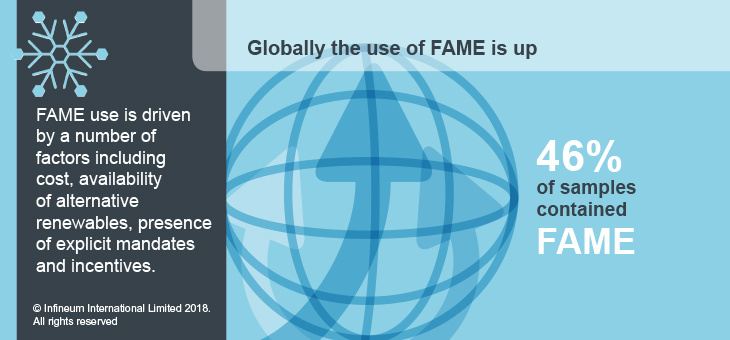
However, the trends in the use of FAME vary widely on a regional basis. These variations are driven by a number of factors including cost, availability of alternative renewables, presence of explicit mandates and incentives.
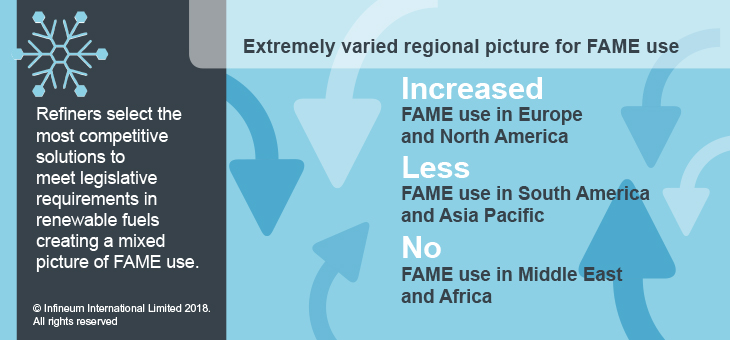
Governments around the world are introducing or increasing renewable fuels blend targets. However, the term 'renewable' covers a wide range of sources and, as regulations and incentives for the use of FAME change, refiners will continue to select the most cost competitive solution to meet necessary blend targets.
In the last Survey, we reported the first definite signs of hydrogenated vegetable oil (HVO)* used as a renewable diesel fuel in Europe and the US. In 2018 the use of HVO appears to be growing, being detected in samples from Europe, South America and Asia Pacific.
* Only co-processed (non isomerised) HVO is detected, which means samples from counties using isomerised HVO are not reported.
Global average wear scar diameter, which had been slightly increasing in previous Surveys, now remains stable.
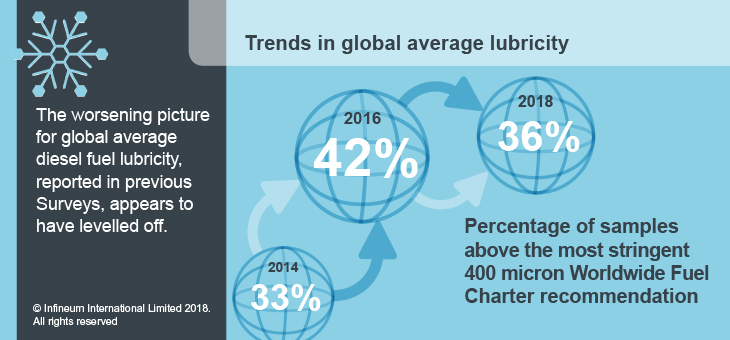
However, on examining the trends for samples meeting the 460 micron level the picture is slightly worse, with 89% of samples being below this limit in 2018, compared to almost 94% in 2016.
As sulphur is a key element in terms of wear protection, it will be increasingly important to find the right selection of lubricity additives to ensure that vehicle performance is not adversely affected in the future.
In Europe and North America very low sulphur limits for diesel fuels have been in place for some years. In 2018 all of the 211 samples collected from these regions contained less than 10 ppm sulphur.
In those countries that are still working towards the ‘ultra low sulphur diesel’ (ULSD) benchmark, there has been a continued downward trend in sulphur levels.
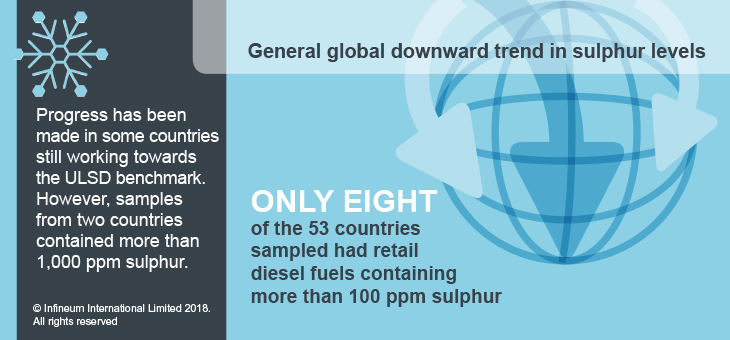
The Middle East is one area of particular interest as some refiners look to export their products to meet growing global diesel fuel demand. Here, although there is some variability, the general overall downward sulphur trend is continuing.
All of these winter diesel fuel quality trends mean expert advice on specification requirements and the use of proven additive technology are increasingly important to help fuel producers address the growing list of challenges facing the industry.
Fuels Technologists from Infineum have been tracking the trends in diesel fuel quality in this biennial Survey for many years, providing the industry with a comprehensive picture of the global changes.
If you have any questions or comments about the 2018 Infineum Winter Diesel Fuel Quality Survey please contact the Infineum Fuels Team.
Sign up to receive monthly updates via email